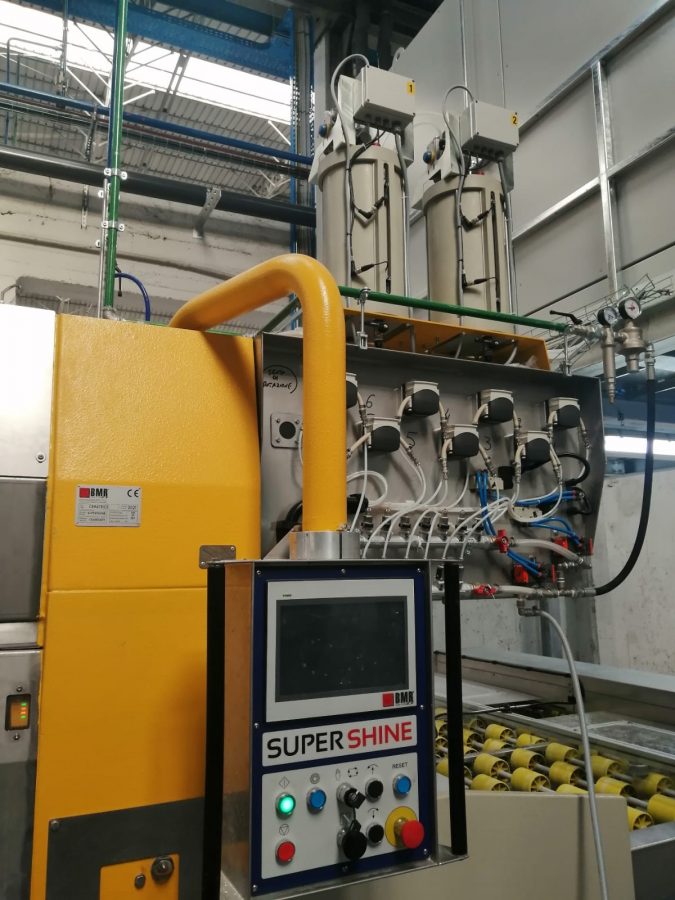From analogue to digital with SuperShine and Leviga Digital: new solutions made in BMR to make the finishing process more efficient, avoiding waste and helping companies to recover margins.
At BMR, the drive towards digitization has never been a pure exercise in style or competitiveness: more tangibly, the R&D work in Scandiano has always been directed towards the production efficiency of the machines. Digitization is seen as a tool for customer companies to strengthen margins and balance the relationship between costs and benefits, reducing waste and errors and optimizing resources.
An approach that BMR has always pursued and maintained, and which today becomes vital for ceramic and surface manufacturers, struggling with the increase in energy costs and the shortage of raw materials, which oscillate between the extreme difficulty in finding them and skyrocketing prices. It therefore becomes of fundamental importance to have total control of the entire production process and in particular of the finishing process, and to do so BMR proposes a new way of conceiving it through complete integration within a digital service platform. By creating systems that allow the objective analysis of the data and the optimal setting of the machines, the Scandiano-based company aims precisely at this, at the optimization of each phase, at impressing in the production the maximum possible objectivity that leads to reducing waste (above all avoiding the loss of batches of slabs due to chipping, treatment and lapping errors) and to ensure more efficiency and recovery of margins.
And it is exactly this perspective that has inspired the new versions of two flagship products, two «musts» of BMR: the SuperShine and the Leviga Digital. The double proposal consists in introducing a business management logic integrated with production. Through a constant exchange of information and the introduction of innovative, less empirical technical solutions in the different stages of the process, it will be possible to achieve maximum customization of the finished product in a market that leans increasingly towards a «service on demand». This approach cannot neglect the salient aspects of quality and yields and, at the same time, the consumption of materials and the use of resources, to achieve «process awareness». Only the provision and use of the tools necessary to keep the various process variables «under control» contribute to the creation of products with these technical characteristics. And it is clear how an «end of line» of this type can represent a great opportunity even for the users themselves, who thus become protagonists able to have the entire process under control.
To allow all this, in the case of Leviga Digital, BMR has conceived the Leviga Simulator, a new method of planning, monitoring and management of the end of line, which constitutes an extraordinary revolution in the very way of experiencing the production plant, making assessments more objective by «simplifying» the operations for the «technologist» who works on the machine.

